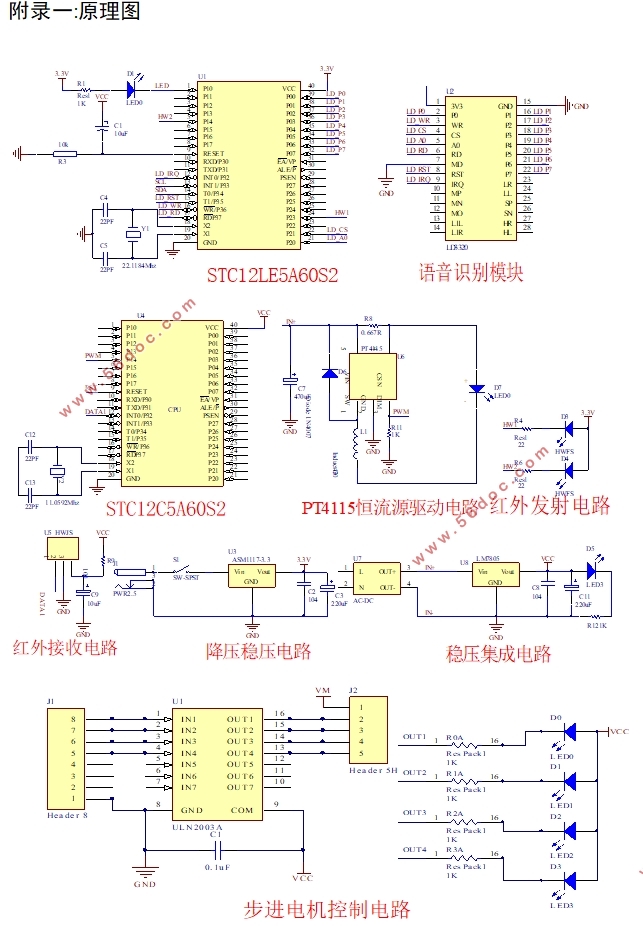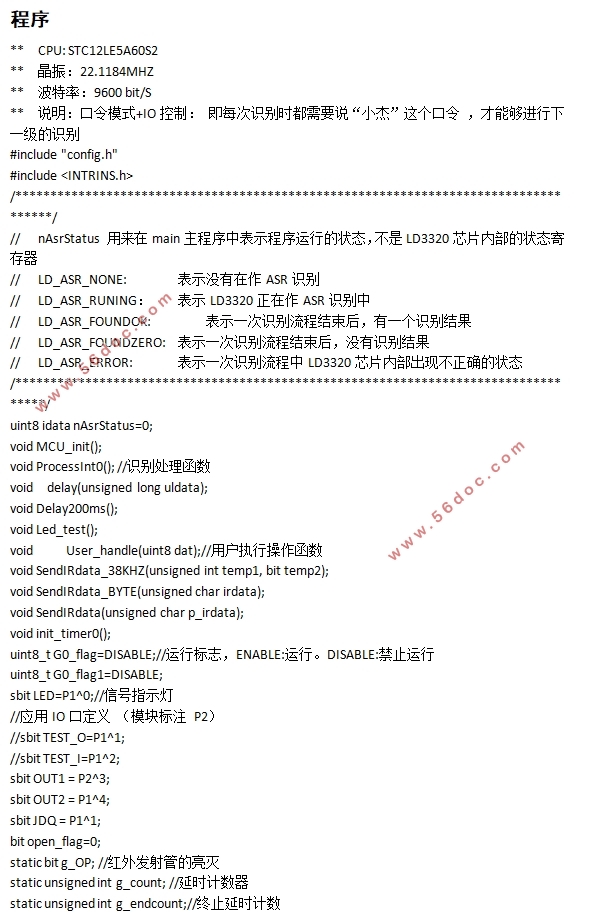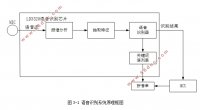基于语音识别的智能控制系统设计(论文12000字)
摘要:随着社会经济发展,以及科学技术的日益更新,人们对于家用电器的智能化的要求越来越高。语音识别处理作为一种便捷的控制方法,在当今社会得到了越来越多的重视。本文采用语音识别来实现对家用电器的控制。通过LD3320、STC12LE5A60S2单片机、红外遥控系统、PWM等,来实现对电灯的亮度控制,窗帘的开关,空调显示的控制。在一定程度上能够满足现代人对于智能生活的追求。与此同时,本设计对于那些身体不便人士,也起到了很好的作用,能够较好满足他们的迫切需求。传统的触摸式开关,遥控器,窗帘的开关等等,都对自然人身体状况等有一定的潜在要求,从而对于身体有残疾的人士极为不便。而将说话这一日常最常用的交流方式,应用在家电控制中。某种程度上,极大的方便了他们的日常生活,具有较好的实用性。
关键词:LD3320;STC12LE5A60S2;红外遥控;PWM
Design of intelligent control system based on speech recognition
Abstract:With the development of social economy and the ever-renewing of science and technology, people are demanding more and more intellectualization of household appliances.As a convenient control method, speech recognition processing has been paid more and more attention in today's society.This paper USES voice recognition to control household appliances.Through LD3320, STC12LE5A60S2 single chip microcomputer, infrared remote control system, PWM, etc., to realize the brightness control of the electric lamp, the switch of the curtain, the control of air conditioning display.To a certain extent, it can satisfy modern people's pursuit of intelligent life.At the same time, this design has also played a good role for people with physical inconveniences and can meet their urgent needs better.Traditional touch switch, remote control, curtain switch and so on have certain potential requirements for natural person's physical condition, so it is extremely inconvenient for people with physical disabilities.However, the most common communication method of speaking is applied in home appliance control.To some extent, it greatly facilitates their daily life and has a good practicality.
Key words: LD3320;STC12LE5A60S2;infrared remote control;PWM



目 录
1绪论 1
1.1研究目的和意义 1
1.2 国内外研究现状 1
1.2.1国外研究现状 1
1.2.2国内研究现状 2
1.3 论文内容简介 2
2系统总体设计方案 3
2.1系统功能分析 3
2.2功能模块方案分析 4
2.2.1 芯片选型方案 4
2.2.2语音识别技术方案 4
2.2.3 远程信号遥控方案 4
2.3 功能模块方案确定 4
2.4 本章小结 5
3 硬件电路设计 5
3.1 LD3320语音识别模块分析 5
3.1.1 语音识别系统的原理结构 5
3.1.2 LD3320模块和主控芯片电路设计 5
3.2红外接收和发射电路设计 6
3.3 PT4115恒流源驱动电路设计 7
3.5 空调显示电路设计 9
3.6 辅助电路设计 9
3.7本章小结 10
4 系统程序设计 10
4.1语音识别及信号发射系统软件设计 10
4.1.1语音识别系统软件设计 11
4.1.2 红外发射软件设计 12
4.2 红外遥控接收软件设计 12
4.3 灯光控制系统软件设计 12
4.4 窗帘控制系统软件设计 13
4.5本章小结 13
5软件硬件联调 14
5.1 模块功能调试 14
5.1.1电路调试 14
5.1.2功能模块调试 14
5.2本章小结 16
6 总结与展望 16
参考文献 17
致 谢 18
附录一:原理图 19
附录二:源程序 20
附录三:实物图 26
|







